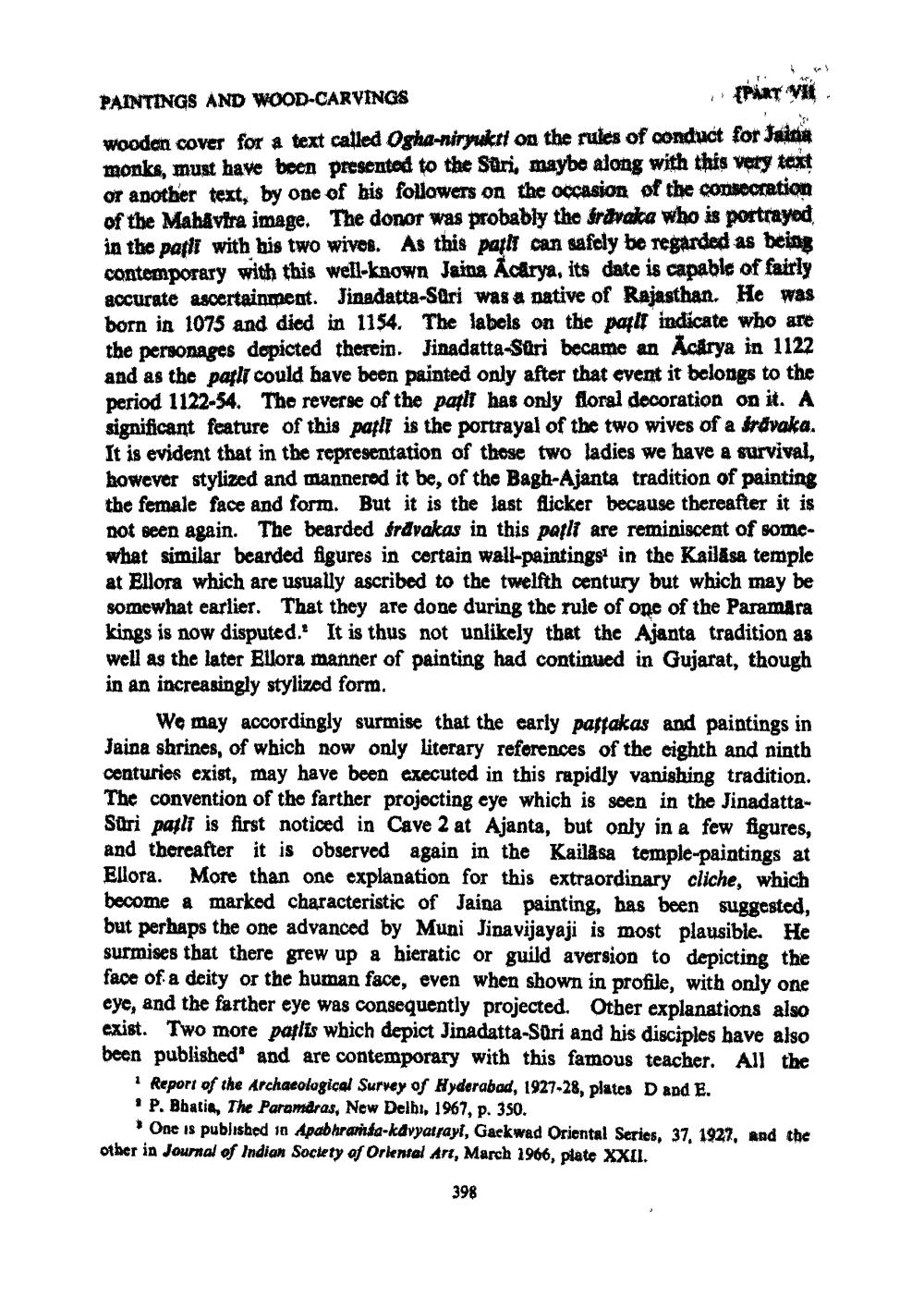________________
PAINTINGS AND WOOD-CARVINGS
{PART VI
wooden cover for a text called Ogha-niryukt! on the rules of conduct for Jaina monks, must have been presented to the Sari, maybe along with this very text or another text, by one of his followers on the occasion of the consecration of the Mahavira image. The donor was probably the iravaka who is portrayed in the pall with his two wives. As this part can safely be regarded as being contemporary with this well-known Jaina Acarya, its date is capable of fairly accurate ascertainment. Jinadatta-Sari was a native of Rajasthan. He was born in 1075 and died in 1154. The labels on the part indicate who are the personages depicted therein. Jinadatta-Sari became an Acarya in 1122 and as the parli could have been painted only after that event it belongs to the period 1122-54. The reverse of the patlt has only floral decoration on it. A significant feature of this path is the portrayal of the two wives of a iravaka. It is evident that in the representation of these two ladies we have a survival, however stylized and mannered it be, of the Bagh-Ajanta tradition of painting the female face and form. But it is the last flicker because thereafter it is not seen again. The bearded fravakas in this parli are reminiscent of somewhat similar bearded figures in certain wall-paintings in the Kailasa temple at Ellora which are usually ascribed to the twelfth century but which may be somewhat earlier. That they are done during the rule of one of the Paramāra kings is now disputed. It is thus not unlikely that the Ajanta tradition as well as the later Ellora manner of painting had continued in Gujarat, though in an increasingly stylized form.
We may accordingly surmise that the early pattakas and paintings in Jaina shrines, of which now only literary references of the eighth and ninth centuries exist, may have been executed in this rapidly vanishing tradition. The convention of the farther projecting eye which is seen in the JinadattaSari pal is first noticed in Cave 2 at Ajanta, but only in a few figures, and thereafter it is observed again in the Kailasa temple-paintings at Ellora. More than one explanation for this extraordinary cliche, which become a marked characteristic of Jaina painting, has been suggested, but perhaps the one advanced by Muni Jinavijayaji is most plausible. He surmises that there grew up a hieratic or guild aversion to depicting the face of a deity or the human face, even when shown in profile, with only one eye, and the farther eye was consequently projected. Other explanations also exist. Two more pailts which depict Jinadatta-Sari and his disciples have also been published' and are contemporary with this famous teacher. All the
1 Report of the Archaeological Survey of Hyderabad, 1927-28, plates D and E.
P. Bhatia, The Paramdras, New Delhi, 1967, p. 350.
One is published in Apabhrahka-kavyatṛayi, Gaekwad Oriental Series, 37, 1927, and the other in Journal of Indian Society of Oriental Art, March 1966, plate XXII.
398




